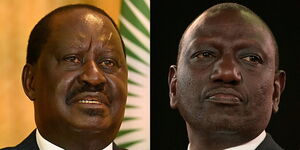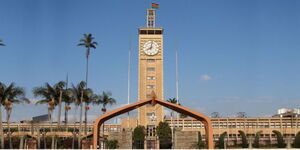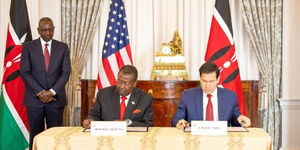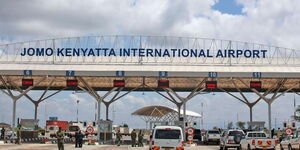The International Monetary Fund (IMF) has come under criticism following its reported remarks that Kenya’s exchange rate has been 'too stable,' a position that has sparked debate among policymakers.
According to Kenya Revenue Authority (KRA) chairperson Ndiritu Muriithi, the IMF raised concerns during its recent visit to Kenya that the shilling’s limited fluctuation could be interfering with monetary policy transmission and inflation targeting.
Speaking on Friday, Muriithi criticised the IMF’s position, accusing the global lender of making misguided assessments that do not always reflect Kenya’s economic realities.
''The tax-to-GDP ratio is a rule of thumb created by our friends at the IMF. I do not always agree with them. For example, they were in town two weeks ago and told us that the exchange rate was too stable and impairing,'' Muriithi said.
He added that the IMF’s strict adherence to its economic models often overlooks the unique structural factors of developing economies.
''They think that it is interfering with monetary policy transmission and inflation targeting. The tax-to-GDP ratio is a rule of thumb that should not be followed biblically,'' he added.
Mureithi’s comments come ahead of the IMF’s next report on Kenya’s economic outlook, which is expected to provide an updated assessment of the country’s monetary policy reforms and fiscal performance as Kenya seems to eye another fiscal arrangement programme with the monetary service provider.
Strong Shilling
Kenya is currently scouting for a new funded program with the IMF after prematurely terminating the USD3.6 billion (Ksh465.26 billion) 4-year program in March this year.
The shilling has remained stable against the dollar for most of the year, with the latest data from the Central Bank of Kenya (CBK) showing that it traded at Ksh129.24 per US dollar as of October 24. CBK noted that the local currency maintained stability against major international and regional currencies during the week ending October 24, 2025.
This stability has been largely supported by adequate foreign exchange reserves, which stood at USD 12.08 billion (equivalent to 5.3 months of import cover) as of Thursday this week.
The shilling’s performance has also been reinforced by strong diaspora remittances and the sound monetary policies implemented by the Central Bank, according to the regulator.
Meanwhile, the IMF’s October 2025 World Economic Outlook (WEO) projects that global growth will slow from 3.3 per cent recorded in 2024 to 3.2 per cent in 2025 and further to 3.1 per cent in 2026, citing persistent inflationary pressures and continued policy uncertainties.












